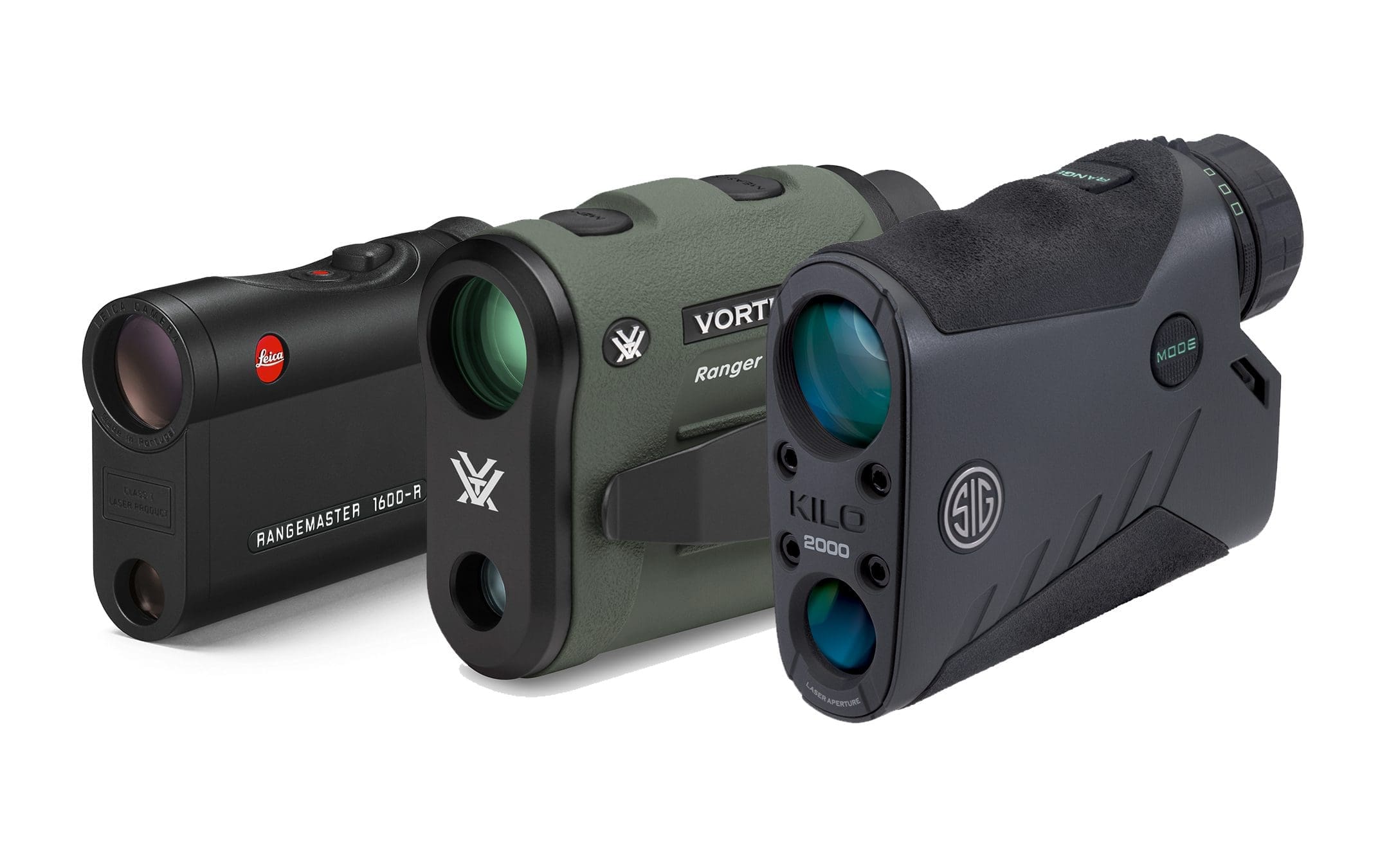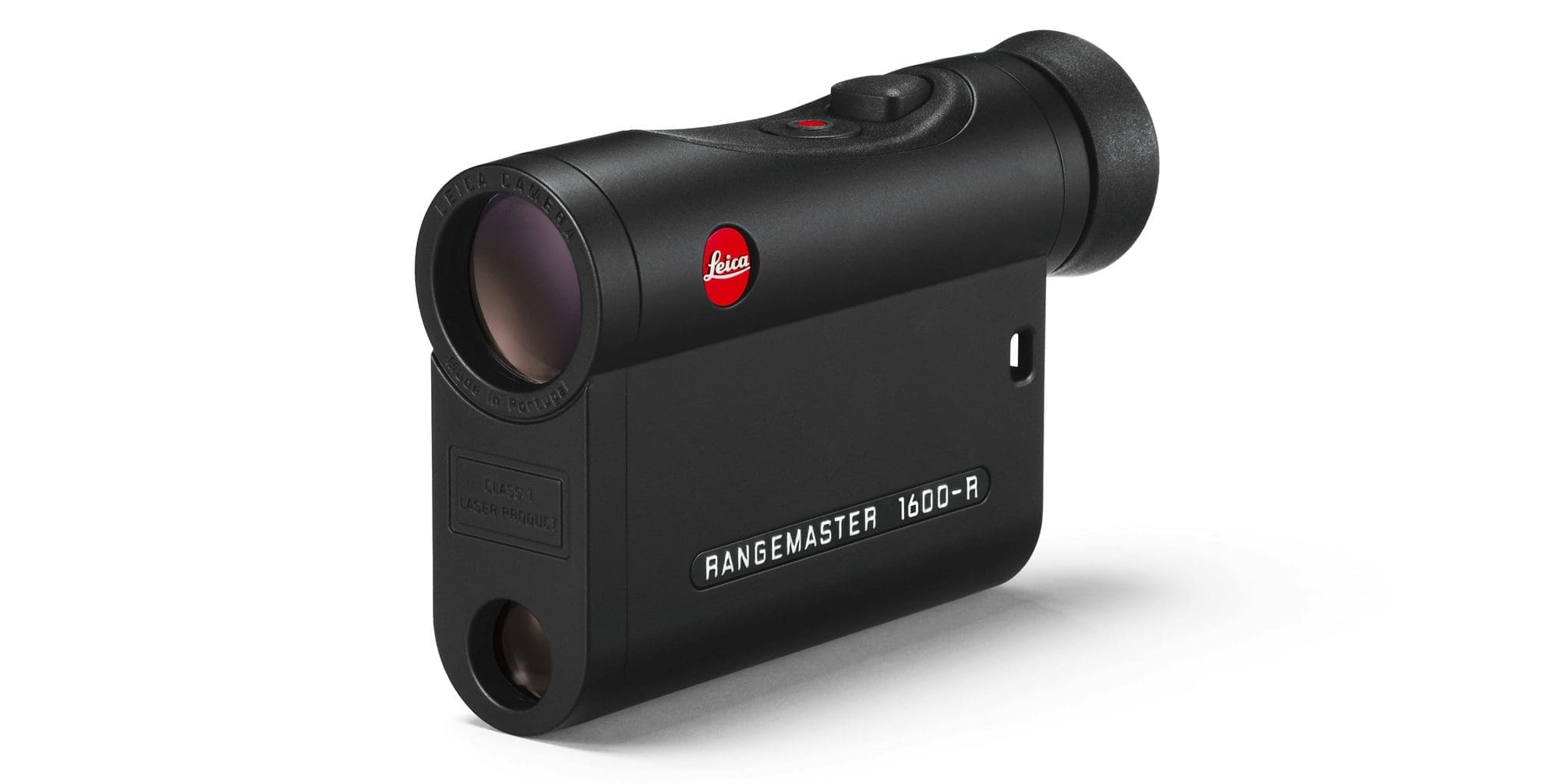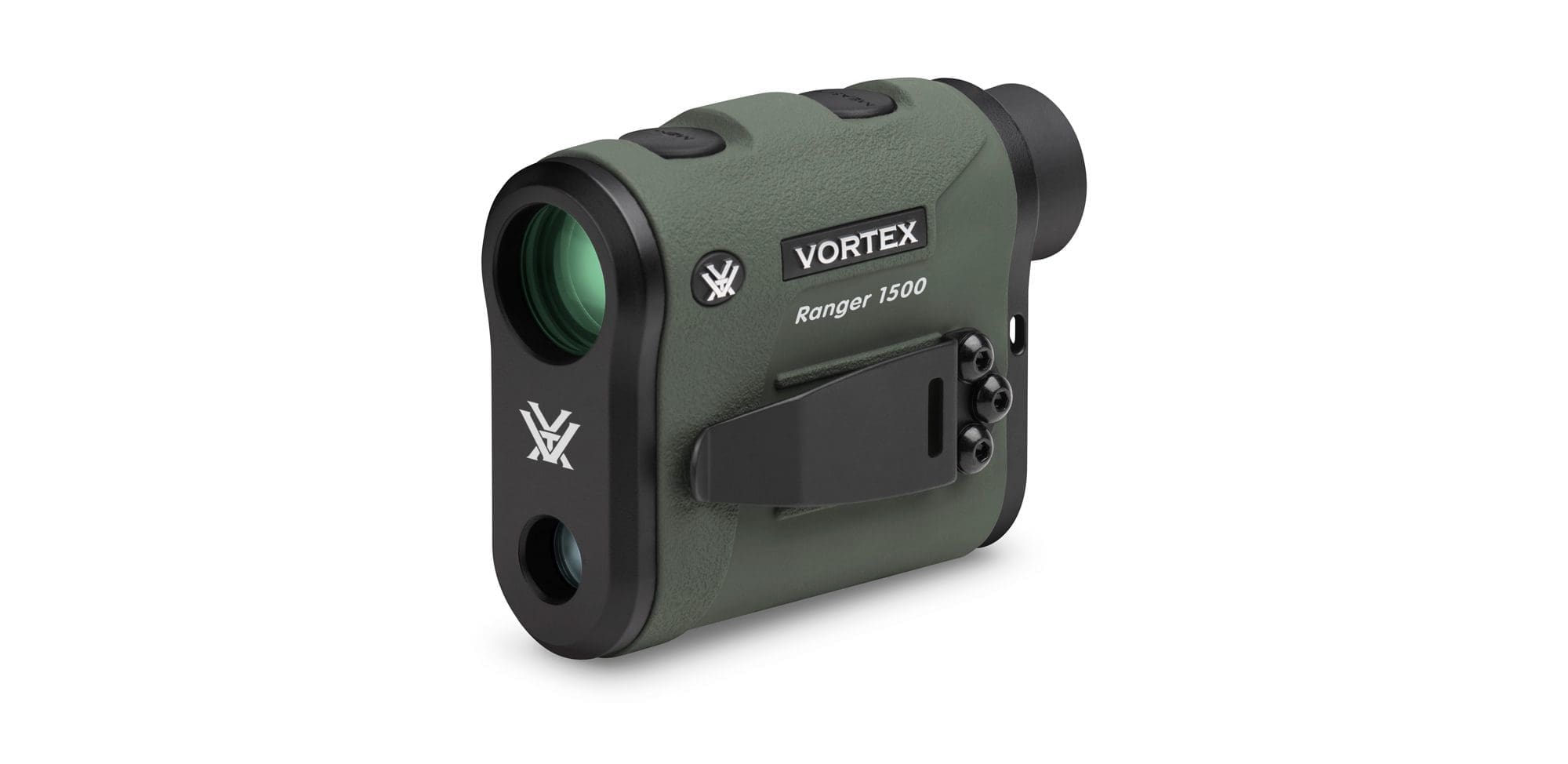
NOTICE: Certain links on this post may earn a commission for Western Hunter Magazine from Amazon or our other affiliate partners when you make a purchase. Thank you for your support.
The Great Compensators
The laser rangefinder is arguably the most significant product introduction to the hunting world since the bolt action rifle over 100 years ago. In the early 90’s Leica introduced the first generation Geovid, a binocular capable to delivering the distance to a target with the touch of a button. This set off a firestorm of product development and for good reason, the most important contributing factor to hunting accuracy is knowing the distance to the target. Prior to the laser rangefinder, even the most well trained snipers could only estimate distance within +/- 20%, so any shot over 250 yards was not much more than a guess. In those days (and I hunted in those days) the most common phrase uttered in crunch time was “hold at the top of his back and see where you hit.” In hind sight I can see how irresponsible and often unethical it was to take a shot with so little certainty of a clean kill, fortunately those days are behind us.
The concept of how a laser rangefinder works is actually very simple, but of course the reality of actually creating a device is far more complicated. In the simplest terms laser rangefinders use a transmitter to send out a pulsed laser light to a target, the laser bounces back off the target and is collected by the receiver. Knowing the speed of light and the time of flight, the internal processor then calculates the distance. The developing engineers refer to the combination of the transmitter and receiving components, along with the software needed to deliver the yardage as the “engine” of the laser rangefinder. All laser rangefinders use what is known as a class 1 eye safe laser light source, the difference in between units is not a reflection of the power of the laser but is direct result of more sophisticated engine components.
Innovation continues to improve the accuracy and reliability of laser rangefinders. The most current models have the ability to emit hundreds to thousands pulses of laser light for every range calculation, weed out the weak signals, and average the results and deliver a precise distance within fractions of a second.
LCD vs LED
Laser rangefinders can be grouped into two categories, the first being transmissive liquid crystal display, commonly known as LCD. Transmissive LCD rangefinders employ a screen in front of the lens. The reticle and all of the resulting data is projected onto this screen with the familiar black letters and numbers. LCD screens are the least expensive way to build a laser rangefinder, but the reticle and data can be very difficult to see in low light situations. Because the LCD screen literally covers the optical system it blocks a dramatic amount of light, rendering them almost useless in those first and last minutes of the day.
The second group of rangefinders employs and LED display in which the reticle and data are projected onto the lens. Because the LED display is projected there is very little loss of total light transmission. LED components are more expensive than LCD but the advantages are dramatic.
Factors affecting performance
There are several factors that can affect a rangefinder’s ability to deliver a range. The first and most prevalent problem is target quality. Given that LRF’s work by measuring reflected light, flat perpendicular reflective surfaces (think street signs) offer the best target imaginable. Irregular surfaces tend to scatter light and dark surfaces can actually absorb light and will seriously diminish the volume of reflected light and can limit a rangefinders maximum capability by as much as 50%. Unfortunately game animal hides tend to fall into the “non-reflective” category, in fact black bears may be impossible to get a reliable reading on during bright light. If this happens, finding an object within close proximity that does deliver a reading is your only option.
Light will travel through a vacuum at a constant speed of 186,282 miles per second, but our atmosphere is not a vacuum. All atmospheric conditions such as humidity, temperature, elevation, dust, pollution, rain, fog and snow will affect a laser rangefinder. Because a laser rangefinder is metering light, the infrared light emitted by the sun interferes with the engines’ ability to record the laser pulses, so don’t expect a laser rangefinder to perform at its best in the middle of a bright sunny summer day.
Keep in mind, the rangefinder is generating distances of each object it strikes and then averaging them to give you an accurate reading. If the engine cannot get enough consistent feedback it will not give you a reading. Imagine trying to shoot a deer standing off hand at 600 yards, bullets would be sprayed all of over the mountain. The same thing happens when you try to hand-hold a rangefinder with no support. Either use a tripod mount or do whatever necessary to steady the rangefinder on the target.
Last Target and Best Target
Some laser rangefinders can be programmed to filter results in one of two basic modes based on field conditions and target priority. When set on “Best Target” mode, the laser rangefinder will deliver the distance to whatever object is delivering the most results. This is the versatile mode for the hunter, and will provide the fastest and most accurate result under most hunting conditions. However if you are hunting in areas with lots of vegetation then “Last Target Priority”, will as the name implies, deliver the distance to the furthest object the laser senses. Learning to quickly program your laser rangefinder between these modes can be a difference maker on a hunt.
LOS vs Angle Compensation
For more than a decade laser rangefinders could only deliver the actual line-of-sight distance to the target. While this was an epic advancement, the shooter still had to understand trigonometry and how to compensate for the up or down angle to the target. With improved engine software many laser rangefinders can also measure the angle of the shot and calculate the true horizontal distance to the target. By working through the menu, the user can choose either a line of sight value with the angle to the target, or the corrected horizontal distance.
While there are still a host of environmental factors that will affect the actual bullet impact, the true horizontal distance will be extremely effective for most hunting calibers on deer size game out to 400 yards. Most companies limit the distance at which their product will deliver angle corrected yardage and for good reason. If you are shooting at any target beyond 500 yards then you will be better served with the line of sight distance, shot angle and true ballistic system that can measure the environmental influences and combine them with a ballistic profile to offer a far more accurate shooting solution.
Each company has a different name for this value, unless you are using rangefinder that offers a ballistic solution, all corrected ranges are the horizontal distance to the target.
Scan Mode
All quality laser rangefinders offer a scan mode in which the LRF will continue to update the yardage at least every second and as fast as 4 times per second. Over the years I have come to rely heavily on the scan function to give me as much data as possible in a short amount of time, especially on a moving target. Keep in mind that battery life in LRF’s is generally reported as a volume of readings, so scan mode drains battery life rather quickly.
Product review
There are literally dozens upon dozens of laser rangefinders on the market, offering a complete review of all hand held rangefinders in the market would fill this entire issue! For this issue we opted to limit the review to LED models (best in class light transmission) and models that are able to deliver measurements on non-reflective targets at the extreme end of what a western hunter needs (minimum 800 yards). Each of these rangefinders come with a pouch that can be attached to a belt or somewhere on your pack.

Sig Kilo 2000
The most recent company to join the battle of laser rangefinder monoculars’ is Sig Sauer. Anyone who has ever worked the action on a Sig pistol or rifle will testify to the fact that Sig never produces mediocrity. When they decided to enter the sport optics market they brought the same “nothing but the best” mentality with them. By assembling a team of the best laser rangefinder engineers in the world and giving them the tools and space to create, they have made an impressive impact on the market in a short period of time.
The newest edition to the Sig Electro-Optics lineup is the feature packed Kilo 2000. The Kilo 2000 offers the greatest reflective target distance of any rangefinder I have tested at a whopping 3400 yards! From my testing I was able to get ranges over 2000 yards on rocks and desert trees.
The Sig Kilo 2000 offers the fastest scan mode in the industry with updates an astounding 4 times per second. Sig also included an ambient light sensor which automatically adjust the brightness level of the display based on the ambient light conditions. So as the sun rises, the brightness of the display brightens, and as light diminishes the display dims so as not to destroy your low light vision. The 7x optic is very clean with excellent resolution and brightness.

Leica Rangemaster CFR 1600 R
Leica is the grandfather of the laser rangefinder pioneers. From the time they introduced the LRF800 in the late 90’s they have utterly owned the high performance monocular rangefinder market. Leica has always delivered exactly what they advertised, I have been able to get reading of 1600 yards even in difficult light conditions and with marginal target quality with a steady rest.
The 1600-R is the newest of the new rangefinders from Leica, the first models were literally shipped in late July. The biggest improvement over previous models is the self-adjusting brightness level in the display, even in pitch black the level is perfect.
The new 1600-R has an improved scan rate of three times per second, but the screen refreshes about once every second. So if you have an older model from Leica you may not notice a big difference but it is there, working in the back ground to give you the most accurate range available.
Leica refers to the corrected horizontal range as “equivalent horizontal range” or EHR. The 1600-R will deliver EHR values from 10-1100 yards. While in scan mode the 1600-R will deliver the line of sight value and the EHR distance will be displayed after the last measurement.

Vortex Ranger 1500
The new Vortex Ranger 1500 is a tough and reliable unit capable of reaching out to 800 yards on non-reflective targets. Vortex uses the term Horizontal Component Distance (HCD) to describe the angle adjusted horizontal distance to the target. In the HCD mode the Ranger will deliver corrected values out to 800 yards on mild slopes of less than 15 degrees, and 400 yards for angles between 15 and 50 degrees. The line of sight mode offers the yardage and the angle to the target.
The Ranger has three manually controlled brightness setting for the display which all work well for daylight situations. The Ranger also has a treaded hole for a tripod adapter plate which will in improve the performance on farther targets. A utility clip can be mounted on either side of the range finder, allowing the user to clip it to any belt or pocket in the heat of the moment.
Vortex has built a reputation for not only having the strongest warranty statement in the industry but they always back it up. In the event your Ranger 1500 becomes damaged or defective, Vortex will fix it or replace it at no charge.

